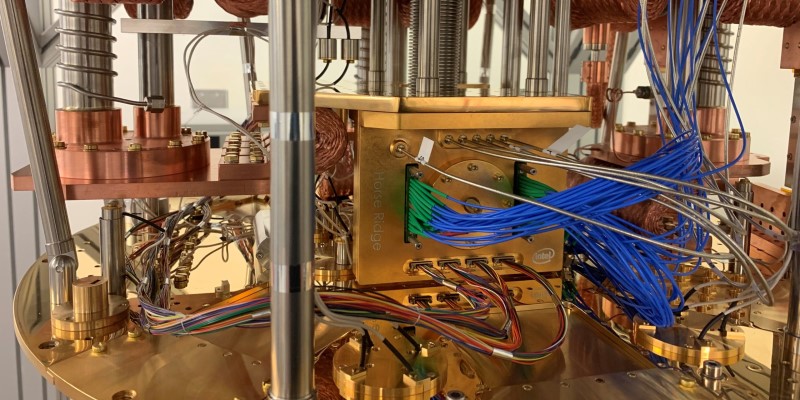Quantum Computing Review Q4 2020
2020 has been a challenging year for many. For the global community involved in quantum technologies it has been about overcoming a different set of challenges, from quantum teleportation to quantum advantage and the miniaturization of quantum solutions for use in mobile and IoT applications. Here’s a quick review of some of the most notable stories from Q4 2020.
Chinese Physicists demonstrate ‘quantum advantage’.
A team of physicists, led by Jian-Wei Pan at the University of Science and Technology of China in Hefei, have made their first conclusive demonstration of ‘quantum advantage’ using photonic qubits. Their quantum system has been able to compute the ‘boson-sampling problem’ in 200 seconds. In contrast, mathematics has proven that it would take the best supercomputers half the age of Earth to perform the same calculation.
“We have shown that we can use photons, the fundamental unit of light, to demonstrate quantum computational power well beyond the classical counterpart” – Jian-Wei Pan, University of Science and Technology of China, Hefei.
Academics and corporate laboratories have been competing to demonstrate ‘quantum advantage’ (previously dubbed ‘quantum supremacy’). Although Google has previously demonstrated ‘quantum advantage’ using the state-of the art Sycamore device, some quantum researchers claimed that their calculation could be achieved with a classical supercomputer within a practical time frame. The Chinese team’s experiment is the first time that quantum advantage has been demonstrated using photonics and has proven that quantum computing can be used to solve problems within a time frame that a classical computer could not achieve.
For more information on this interesting news, make sure to read our point of view: Quantum advantage with photons.
IonQ develops “The World’s Most Powerful Quantum Computer”.
IonQ has made a series of announcements in the past few months, including the development of “the world’s most powerful quantum computer”. Although the system has not yet been fully tested, IonQ believe that the 32 qubit Ion Trap machine can deliver a quantum volume metric of over 4,000,000. However, according to Quantum Computing Report, the machine would still not deliver more power than a classical computer. In addition, IonQ have opened a new Quantum Data Centre, with the capacity to house at least 10 quantum computers. These achievements will see IonQ make progress towards its hardware roadmap.
Honeywell releases System Model H1.
Honeywell has launched a new generation quantum computer, initially offering 10 fully connected qubits with a proven quantum volume of 128. The company aims to “rapidly increase quantum volume by at least an order of magnitude annually for the next five years”. The system is accessible by subscription, via a cloud API as well as through Microsoft Azure and other channels, meaning customers can access the most advanced technology ‘on demand’.
“Imagine if the streaming service to which you subscribed became twice as good in a few weeks, 10 times as good in a few months and thousands of times better in a few quarters” – Tony Uttley, President, Honeywell Quantum Solutions.
Intel brings key control functions into the cryogenic refrigerator.

Horse Ridge II, Intel’s second-generation cryogenic control chip. (Credit: Intel Corporation)
A new cryogenic control chip has been launched by Intel, named Horse Ridge II. Intel have made a significant step towards overcoming the hurdle of scalability for Quantum Computing, by radically simplifying the equipment required to control the chip. While existing quantum systems using a dilution refrigerator cannot be scaled due to cost, power consumption and thermal load, the Horse Ridge II chip replaces bulky control systems with a highly integrated system on chip. This not only accelerates set up time, but also improves qubit performance and enables scalability.
How will Quantum Technology change the digital world?
Speaking at this October’s virtual Inside Quantum Technology Europe 2020 conference, ID Quantique’s Bruno Huttner and Axel Foery discussed the threat quantum computing poses to existing cybersecurity systems and encryption algorithms, and explored the potential quantum technologies that can be employed to counter these risks.
NASA scientists demonstrate Quantum Teleportation.
Researchers have been able to demonstrate that qubits of photons can be sent through a fiber-optic cable, a process known as ‘Quantum teleportation’. The team, comprised of researchers from Fermilab, AT&T, Caltech, Harvard University, Nasa’s Jet Propulsion Laboratory and the University of Calgary, built a 44-kilometer fiber-optic network with off-the shelf equipment compatible with existing internet infrastructure. The qubits were transported through the network with a 90% degree of fidelity, raising hopes that the research could pave the way for a quantum internet.
What’s next for lasers?
Incredibly, 2020 marked the 60th anniversary of the first functioning laser, operated by Theodore H. Maiman at Hughes Research Laboratories, California. While this milestone went largely unremarked, consider the many areas of technology we now take for granted that would not exist without this technology:
“It has conquered many fields of technology: no smartphone, LED screen or computer would work without the impact of lasers.”
Photonics has a vast range of applications, from QRNG chipsets integrated into smartphones to materials science, photonics has a huge part to play in the development of future technologies across many industries.
ID Quantique in the news.
- ID Quantique and KCS join hands to increase the security of video surveillance and protect against hacking.
- ID Quantique honored by 2020 Laser Focus World Innovators Awards.
- ID Quantique’s photon counting OTDR contributes to successful final test firing of the P120C solid rocket motor (Ariane 6) in Kourou.
- ID Quantique and SK Broadband selected for the construction of the first nation-wide QKD network in Korea.
- ID Quantique celebrates its 19th birthday with its eyes turned to an exciting next decade.
- ID Quantique and KEPCO announce they have completed the construction of the first power communication network secured by quantum cryptography in Korea.
- OpenQKD: ID Quantique and fragmentiX successfully apply QKD for a Medical Use Case.
- Standard Chartered adds quantum-level security to mobile banking app.


